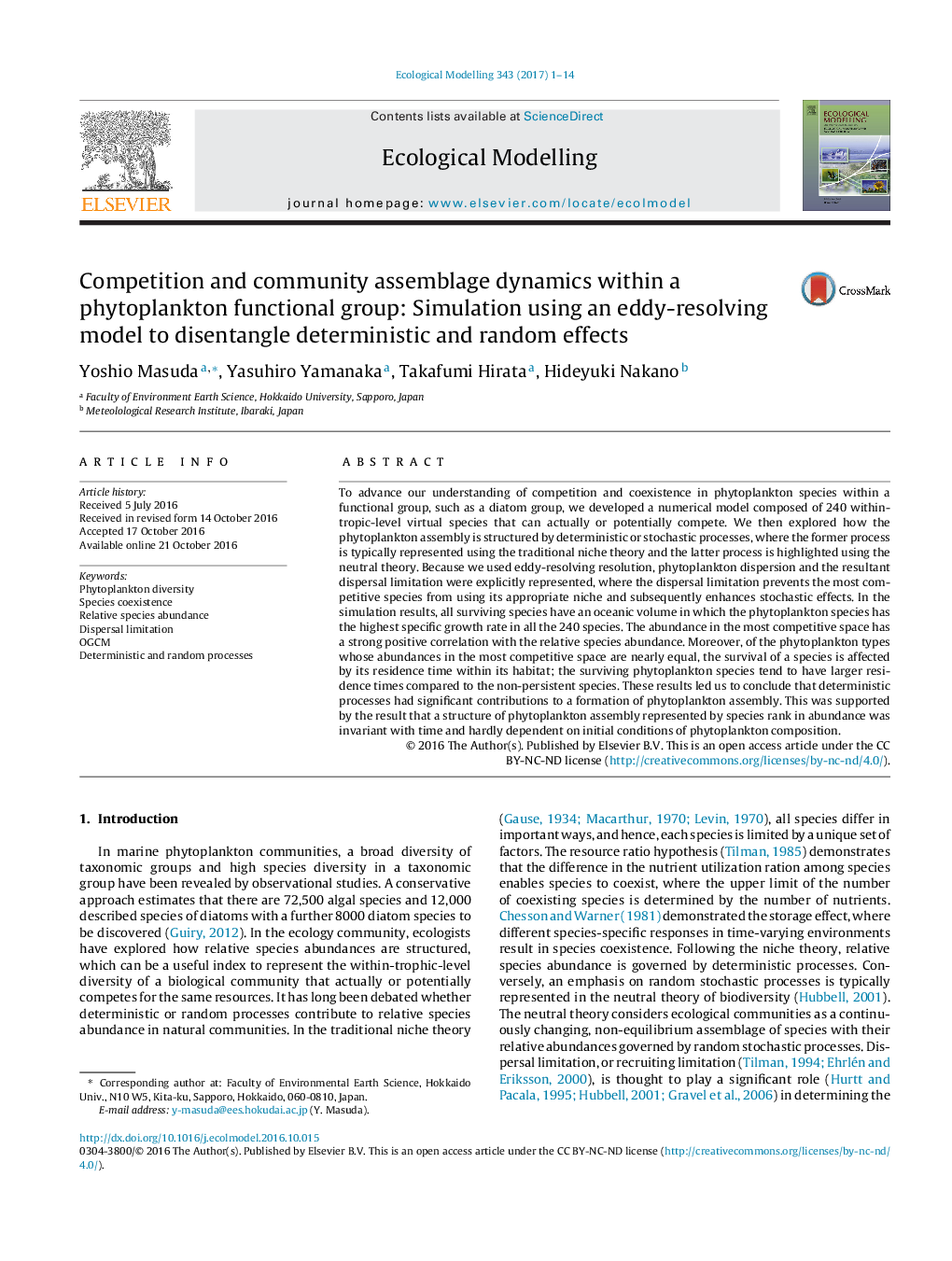| Article ID | Journal | Published Year | Pages | File Type |
|---|---|---|---|---|
| 5742298 | Ecological Modelling | 2017 | 14 Pages |
â¢Competition of 240 phytoplankton species within a functional group was simulated.â¢The phytoplankton assembly is a deterministic assembly rather than stochastic one.â¢Relative species abundance is explained by an index related to competitive ability.â¢The residence time in the habitat also affects relative species abundance.
To advance our understanding of competition and coexistence in phytoplankton species within a functional group, such as a diatom group, we developed a numerical model composed of 240 within-tropic-level virtual species that can actually or potentially compete. We then explored how the phytoplankton assembly is structured by deterministic or stochastic processes, where the former process is typically represented using the traditional niche theory and the latter process is highlighted using the neutral theory. Because we used eddy-resolving resolution, phytoplankton dispersion and the resultant dispersal limitation were explicitly represented, where the dispersal limitation prevents the most competitive species from using its appropriate niche and subsequently enhances stochastic effects. In the simulation results, all surviving species have an oceanic volume in which the phytoplankton species has the highest specific growth rate in all the 240 species. The abundance in the most competitive space has a strong positive correlation with the relative species abundance. Moreover, of the phytoplankton types whose abundances in the most competitive space are nearly equal, the survival of a species is affected by its residence time within its habitat; the surviving phytoplankton species tend to have larger residence times compared to the non-persistent species. These results led us to conclude that deterministic processes had significant contributions to a formation of phytoplankton assembly. This was supported by the result that a structure of phytoplankton assembly represented by species rank in abundance was invariant with time and hardly dependent on initial conditions of phytoplankton composition.
